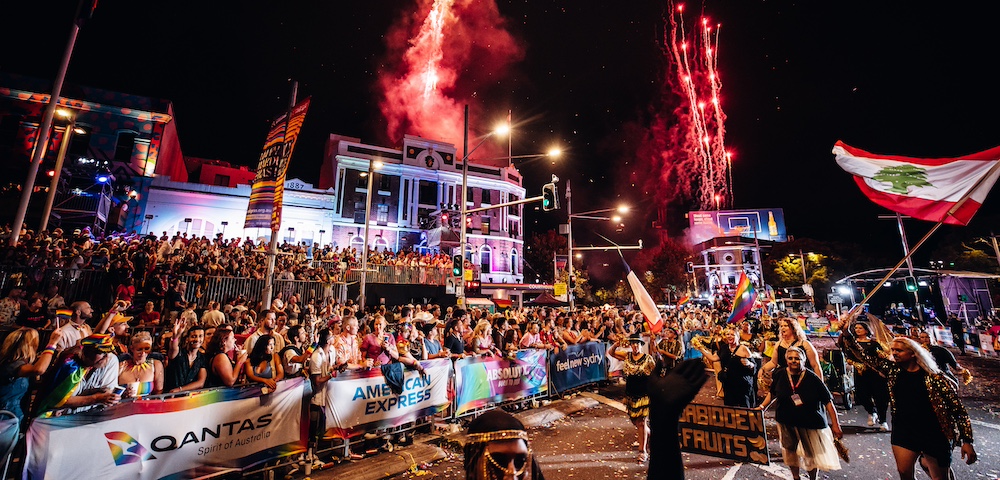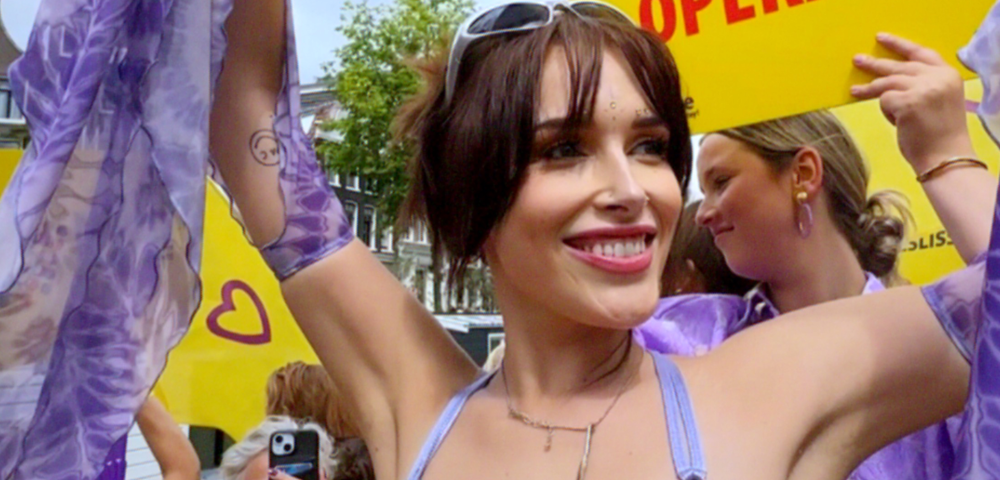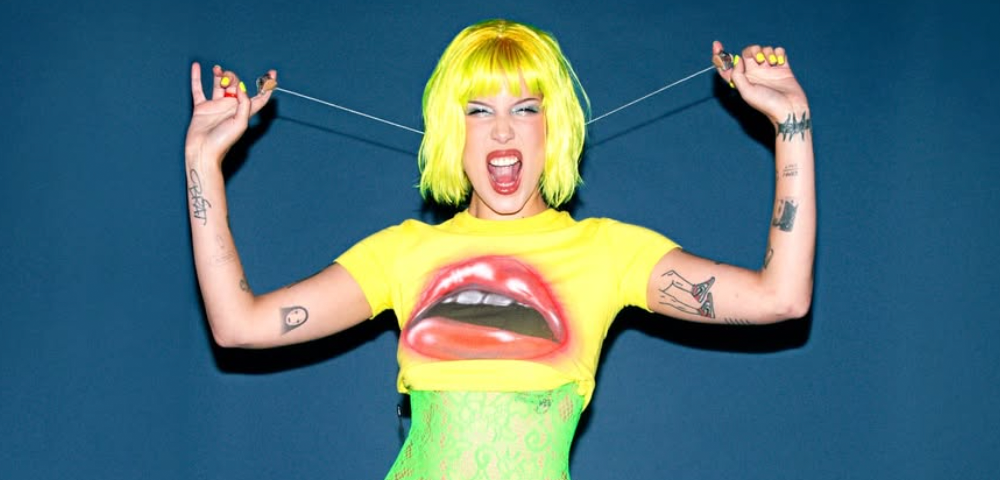
Caring for our community for 30 years
Imagine finding yourself at the centre of the worst epidemic of the modern era. The director and co-founder of the Taylor Square Private Clinic, Dr Robert Finlayson (pictured), doesn’t have to because he was there.
Thirty years ago this month he
and three other doctors with a social conscience opened the Taylor Square Private Clinic in the heart of gay Sydney, frustrated at what was on offer in terms of sexual health services.
“Two of those doctors, Greg Millin and Kieran Mutimer, had been permanent staff members at the Sydney Sexual Health Centre which was then in Macquarie St,” Finlayson told the Star Observer.
“It was a horrible dilapidated old building. The entrance for men was along a long corrugated iron corridor at the back of the parking spaces for the Phillip St police station so if you didn’t feel like the lowest of the low getting to the door you certainly felt it by the time you got into the cruddy waiting room with the torn lino.
“Everyone who walked in said they wished there was somewhere else to go where they didn’t fell like a filthy sinner.”
At the time Finlayson was working at the Sydney Children’s Hospital Camperdown training in dermatology where part of his responsibility had been the leukemia ward.
“Watching the kids dying was having a bad effect on me and I thought if I go into clap there will still be plenty of skin but the people won’t be dying,” Finlayson said.
Finlayson met another founding doctor, Basil Donovan, doing locum work.
“After hearing these comments from the patients many times, one morning tea we said why don’t we do it?” Finlayson said.
“Basil always had an interest in the human rights side of medicine and was quite forward-thinking in his political activism.
“He was keen to gather evidence to decriminalise prostitution, and we were all keen to have homosexual activity decriminalised. Basil was straight but the rest of us were gay and everything was still illegal then.
“There was no dedicated sexual health clinic private practice at that time in Australia and there was certainly none that had a brief of serving marginalised groups like commercial sex workers, transgender people, lesbians and gay men from all walks of life. We thought there was a gap there where we could provide a quality service instead of it being down a dark alley backroom kind of thing, which is how a lot of that stuff had been perceived.
“It was pure coincidence that we opened on the same weekend that the first report of unusual infections among gay men in the United States came out.”
The clinic opened after the Queen’s birthday weekend, so staff missed the report.
“But about three weeks after we opened, the Center for Disease Control released its second Morbidity and Mortality Weekly Report which reported 25 gay men with Kaposi’s sarcoma and Pnuemocystis pneumonia from LA and New York,” Finlayson said.
“We’d been unaware of the previous article — but when we read that, we saw something was brewing.”
Unknown to the clinic, some of its patients from the first day were already infected with HIV.
“We started seeing strange infections that shouldn’t have been occurring in pairs. We would see infected sweat rashes in people’s armpits and groins and then we’d see their boyfriend with the same thing — yet that’s not something that spreads from one person to another,” Finlayson said.
“Guys were coming back from the US saying they’d had measles or glandular fever while they were away.
“We also saw things in guys who were very active in backrooms. Guys who got fucked a lot seemed to be amongst the first group to get sick so we started talking about condom usage without any evidence at that point. It seemed like it was a sexually transmitted infection but every possibility was still up for grabs.”
Finlayson said there was a sense of growing dread among gay men in Sydney.
“Lots of people stopped having sex. I was telling my friends that it had something to do with fucking so maybe you shouldn’t do that for a while. They all thought I was crazy but many of them years later thanked me for ruining their sex lives.”
For the first three years, the clinic had been doing it alone.
“There was no Albion Street Centre — who have just celebrated 25 years — there was no ACON, there was no government information line. For the first few years of the epidemic, we were it, really,” Finlayson said.
“Finally there was identification of the virus in 1983 and then we had an antibody test in late 1984.”
Not long after, someone from within the clinic itself became infected.
“We had a medical student who was spending a term with us who had sex with one of the guys who’d had a measles-like illness. He got it too and became so sick he was hospitalised. He let us take blood from him morning, noon and night, and we were able to see him go from antibody negative to antibody positive.
“When we’d collected a dozen people who’d been through that illness, under a team lead by David Cooper from the Centre for Immunology at St Vincent’s Hospital, we were published as the lead article in The Lancet in March 1985.
“That was the first-ever characterisation of HIV seroconversion illness and that really put Sydney on the map as far as being a research centre for HIV.
“St Vincent’s, in collaboration with the community, had established a cohort of 1000 gay men called the Sydney AIDS cohort who had signed up after a meeting at Paddington Town Hall. They were tested and we got the results they were 40 percent positive. Many of them were our patients. That meant there was an epidemic happening and we had no idea that it was already so established.
“We had around 300 deaths in the first six years of the clinic. AZT came out in 1987 but while that changed things we still had 500 people die in the late ’80s to early ’90s. It was like war.
“What was so horrible was that people, quite rightly, were choosing to die at home but it was a long, slow, decaying death with lots of infections we had no treatments for. Often their boyfriends were patients too and
they’d be caring for them at the same time as knowing that was going to be them in a pretty short space of time.”
Those who feared they might have been exposed to the virus had a long and arduous wait.
“At the time you had to wait six months before you could be confident that the antibody test was correct,” Finlayson said.
“If you had a sexual accident or a broken condom or you pricked yourself with a needle, you didn’t really feel clear for half a year. That’s a long time to be anxious for something that could mean you’re going to die and you’re going to die horribly.”
Despite the incredible demands placed on it, as a business the clinic had always struggled to break even. Expanding into research brought badly needed money into the business while providing newer drugs to its patients.
“We did all the early drug trials and all the monitoring of epidemiology,” Finlayson said.
“Later when Andrew Carr and David Cooper first described lipodystrophy, we had clinic patients involved in that too. We’ve taken part in just about every major international strategic study about how to place drugs and how to use the different classes of drugs.
“We went into licensing studies for different drugs to get them to our patients. We had a significant number of patients who had used up all their options as far as drug treatments went and it was very hard to cobble together an effective combination and so by being in the studies, that got them access to newer drugs.”
Through the early ’90s, staff at the clinic were cracking at the seams.
“We were so overwhelmed at the time, we didn’t realise how mentally unhealthy we were, in that we were all severely depressed. There were a couple of doctors in Sydney who committed suicide around that time but we were at least part of a team so we had other people who were going through the same thing,” Finlayson said.
“I had been living in a building in Elizabeth Bay since I was a medical student which was nicknamed Vaseline Towers because it was full of poofters. More than half the people who lived in that building died in the first decade of the epidemic so it was horrible socially and horrible sexually and horrible professionally. Life wasn’t fun.
“We all hung in there until there were effective treatments from 1996 when we finally had triple therapy.”
With the epidemic stabilising, many chose this time to take a break or get out of the HIV sector. Some got out of medicine all together.
Kieran Mutimer went into the bureaucracy and became head of HIV and STD services in the Northern Rivers based in Lismore.
Basil Donovan went into academia and public service and became director of the Sydney Sexual Health Centre.
“My response was to run away to Brazil. I spent around a year there as a volunteer in HIV prevention,” Finlayson said.
“I really wanted to get out of clinical care and that was great. I would have stayed another year if I had been paid but going for a year without salary was enough.”
But unlike most of his colleagues, Finlayson went straight back into clinical work and remains one of only two doctors still at the clinic from its early years. Dr Ross Price started at the clinic in 1982.
But despite the clinic’s long association with HIV, general medical care for the community at large has been and remains a big part of its work.
“Our original intention was to just be a sexual health clinic but, from very early on, a large number of people with HIV found it very difficult to get general medical care,” Finlayson said.
“As soon as people said they had AIDS, their doctor or their dentist would think of some reason to get rid of them. They also wanted doctors who knew about their underlying condition so it was at patient request that we expanded the practice side of the clinic.”
Today the clinic has 12 doctors. Six are sexual health physicians and six are general practitioners experienced in general medicine and in sexual health and HIV.
The clinic is the only private practice which is an accredited training site for the College of Physicians to train specialist sexual health physicians.
And with changing times comes changing demographics.
“Today, most people who come here don’t have HIV,” Finlayson said. “We have 40,000 files and at the moment we care for just under 2,000 people with HIV.
“Forty percent of our patients are women. They tend to come once or twice a year because when they’re having their Pap smear they’d like a sexual health check-up as well and there are a couple of female doctors here who specialise more in women’s sexual health.”
The clinic’s historic role in the fight against HIV in Australia was sometimes a double-edged sword.
“We did have to constantly tell people, you know people come here for an earache, you don’t have to have AIDS to be a patient here,” Finlayson said.
“We’ve tried to keep it broad, keep the doctors a mix of straight and gay, keep them a mix of young and old and keep them a mix of male and female. Hopefully that way most people can find a couple of us they can stand — maybe even like!”









